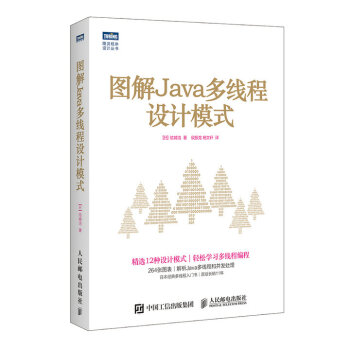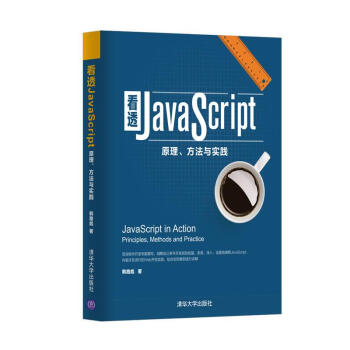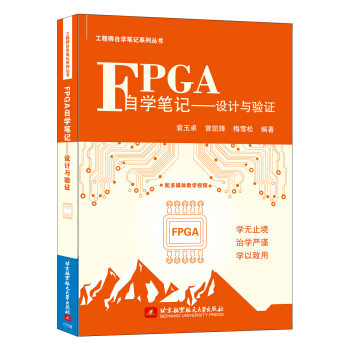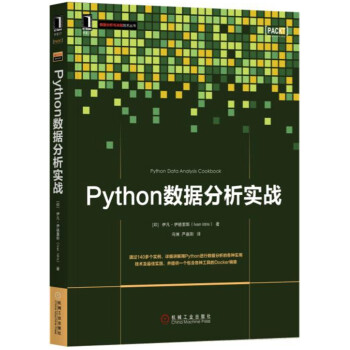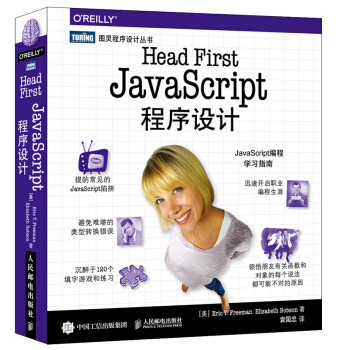![數據結構與算法分析 C++語言描述(第四版)(英文版) [Computer Networks and Internets, Sixth Edition]](https://pic.windowsfront.com/12164785/59a4da58N25915731.jpg)

具體描述
編輯推薦
適讀人群 :本書概念清楚,邏輯性強,內容新穎,適閤作為大專院校計算機軟件與計算機應用等相關專業的雙語教材或參考書,也適閤計算機工程技術人員參考。本版特色如下:
*書中的闡述和算法均用C++新標準C++11的代碼實現。
*unordered_map兩個類模闆的簡要討論。
*增加瞭基數排序和與選擇相關問題下界的證明。增加瞭對AVL樹刪除算法的實現。使用新的union/find分析同時改進此前各版的較弱的O(Mlog*N)界。
內容簡介
本書是數據結構和算法分析的經典教材,書中使用主流的程序設計語言C++作為具體的實現語言。書中內容包括錶、棧、隊列、樹、散列錶、優先隊列、排序、不相交集算法、圖論算法、算法分析、算法設計、攤還分析、查找樹算法、後綴數組、後綴樹、k-d樹和配對堆等。本書把算法分析與C++程序的開發有機地結閤起來,深入分析每種算法,內容全麵、縝密嚴格,並細緻講解精心構造程序的方法。
作者簡介
Mark Allen Weiss,佛羅裏達國際大學計算與信息科學學院教授、副院長,本科教育主任和研究生教育主任。他於1987年獲得普林斯頓大學計算機科學博士學位,師從Bob Sedgewick。他曾經擔任全美AP(Advanced Placement)考試計算機學科委員會的主席(2000-2004)。Weiss教授在數據結構和算法分析方麵卓有建樹,他的數據結構和算法分析的著作尤其暢銷,並受到廣泛好評.已被世界500餘所大學用作教材。
目錄
Chapter 1 Programming: A General Overview 1
1.1 What’s This Book About? 1
1.2 Mathematics Review 2
1.2.1 Exponents 3
1.2.2 Logarithms 3
1.2.3 Series 4
1.2.4 Modular Arithmetic 5
1.2.5 The P Word 6
1.3 A Brief Introduction to Recursion 8
1.4 C++ Classes 12
1.4.1 Basic class Syntax 12
1.4.2 Extra Constructor Syntax and Accessors 13
1.4.3 Separation of Interface and Implementation 16
1.4.4 vector and string 19
1.5 C++ Details 21
1.5.1 Pointers 21
1.5.2 Lvalues, Rvalues, and References 23
1.5.3 Parameter Passing 25
1.5.4 Return Passing 27
1.5.5 std::swap and std::move 29
1.5.6 The Big-Five: Destructor, Copy Constructor, Move Constructor, Copy
Assignment operator=, Move Assignment operator= 30
1.5.7 C-style Arrays and Strings 35
1.6 Templates 36
1.6.1 Function Templates 37
1.6.2 Class Templates 38
1.6.3 Object, Comparable, and an Example 39
1.6.4 Function Objects 41
1.6.5 Separate Compilation of Class Templates 44
1.7 Using Matrices 44
1.7.1 The Data Members, Constructor, and Basic Accessors 44
1.7.2 operator[] 45
1.7.3 Big-Five 46
Summary 46
Exercises 46
References 48
Chapter 2 Algorithm Analysis 51
2.1 Mathematical Background 51
2.2 Model 54
2.3 What to Analyze 54
2.4 Running-Time Calculations 57
2.4.1 A Simple Example 58
2.4.2 General Rules 58
2.4.3 Solutions for the Maximum Subsequence
Sum Problem 60
2.4.4 Logarithms in the Running Time 66
2.4.5 Limitations of Worst-Case Analysis 70
Summary 70
Exercises 71
References 76
Chapter 3 Lists, Stacks, and Queues 77
3.1 Abstract Data Types (ADTs) 77
3.2 The List ADT 78
3.2.1 Simple Array Implementation of Lists 78
3.2.2 Simple Linked Lists 79
3.3 vector and list in the STL 80
3.3.1 Iterators 82
3.3.2 Example: Using erase on a List 83
3.3.3 const_iterators 84
3.4 Implementation of vector 86
3.5 Implementation of list 91
3.6 The Stack ADT 103
3.6.1 Stack Model 103
3.6.2 Implementation of Stacks 104
3.6.3 Applications 104
3.7 The Queue ADT 112
3.7.1 Queue Model 113
3.7.2 Array Implementation of Queues 113
3.7.3 Applications of Queues 115
Summary 116
Exercises 116
Chapter 4 Trees 121
4.1 Preliminaries 121
4.1.1 Implementation of Trees 122
4.1.2 Tree Traversals with an Application 123
4.2 Binary Trees 126
4.2.1 Implementation 128
4.2.2 An Example: Expression Trees 128
4.3 The Search Tree ADT?aBinary Search Trees 132
4.3.1 contains 134
4.3.2 findMin and findMax 135
4.3.3 insert 136
4.3.4 remove 139
4.3.5 Destructor and Copy Constructor 141
4.3.6 Average-Case Analysis 141
4.4 AVL Trees 144
4.4.1 Single Rotation 147
4.4.2 Double Rotation 149
4.5 Splay Trees 158
4.5.1 A Simple Idea (That Does Not Work) 158
4.5.2 Splaying 160
4.6 Tree Traversals (Revisited) 166
4.7 B-Trees 168
4.8 Sets and Maps in the Standard Library 173
4.8.1 Sets 173
4.8.2 Maps 174
4.8.3 Implementation of set and map 175
4.8.4 An Example That Uses Several Maps 176
Summary 181
Exercises 182
References 189
Chapter 5 Hashing 193
5.1 General Idea 193
5.2 Hash Function 194
5.3 Separate Chaining 196
5.4 Hash Tables without Linked Lists 201
5.4.1 Linear Probing 201
5.4.2 Quadratic Probing 202
5.4.3 Double Hashing 207
5.5 Rehashing 208
5.6 Hash Tables in the Standard Library 210
5.7 Hash Tables with Worst-Case O(1) Access 212
5.7.1 Perfect Hashing 213
5.7.2 Cuckoo Hashing 215
5.7.3 Hopscotch Hashing 227
5.8 Universal Hashing 230
5.9 Extendible Hashing 233
Summary 236
Exercises 237
References 241
Chapter 6 Priority Queues (Heaps) 245
6.1 Model 245
6.2 Simple Implementations 246
6.3 Binary Heap 247
6.3.1 Structure Property 247
6.3.2 Heap-Order Property 248
6.3.3 Basic Heap Operations 249
6.3.4 Other Heap Operations 252
6.4 Applications of Priority Queues 257
6.4.1 The Selection Problem 258
6.4.2 Event Simulation 259
6.5 d-Heaps 260
6.6 Leftist Heaps 261
6.6.1 Leftist Heap Property 261
6.6.2 Leftist Heap Operations 262
6.7 Skew Heaps 269
6.8 Binomial Queues 271
6.8.1 Binomial Queue Structure 271
6.8.2 Binomial Queue Operations 271
6.8.3 Implementation of Binomial Queues 276
6.9 Priority Queues in the Standard Library 282
Summary 283
Exercises 283
References 288
Chapter 7 Sorting 291
7.1 Preliminaries 291
7.2 Insertion Sort 292
7.2.1 The Algorithm 292
7.2.2 STL Implementation of Insertion Sort 293
7.2.3 Analysis of Insertion Sort 294
7.3 A Lower Bound for Simple Sorting Algorithms 295
7.4 Shellsort 296
7.4.1 Worst-Case Analysis of Shellsort 297
7.5 Heapsort 300
7.5.1 Analysis of Heapsort 301
7.6 Mergesort 304
7.6.1 Analysis of Mergesort 306
7.7 Quicksort 309
7.7.1 Picking the Pivot 311
7.7.2 Partitioning Strategy 313
7.7.3 Small Arrays 315
7.7.4 Actual Quicksort Routines 315
7.7.5 Analysis of Quicksort 318
7.7.6 A Linear-Expected-Time Algorithm for Selection 321
7.8 A General Lower Bound for Sorting 323
7.8.1 Decision Trees 323
7.9 Decision-Tree Lower Bounds for Selection Problems 325
7.10 Adversary Lower Bounds 328
7.11 Linear-Time Sorts: Bucket Sort and Radix Sort 331
7.12 External Sorting 336
7.12.1 Why We Need New Algorithms 336
7.12.2 Model for External Sorting 336
7.12.3 The Simple Algorithm 337
7.12.4 Multiway Merge 338
7.12.5 Polyphase Merge 339
7.12.6 Replacement Selection 340
Summary 341
Exercises 341
References 347
Chapter 8 The Disjoint Sets Class 351
8.1 Equivalence Relations 351
8.2 The Dynamic Equivalence Problem 352
8.3 Basic Data Structure 353
8.4 Smart Union Algorithms 357
8.5 Path Compression 360
8.6 Worst Case for Union-by-Rank and Path Compression 361
8.6.1 Slowly Growing Functions 362
8.6.2 An Analysis by Recursive Decomposition 362
8.6.3 An O( M log *N ) Bound 369
8.6.4 An O( M |á(M, N) ) Bound 370
8.7 An Application 372
Summary 374
Exercises 375
References 376
Chapter 9 Graph Algorithms 379
9.1 Definitions 379
9.1.1 Representation of Graphs 380
9.2 Topological Sort 382
9.3 Shortest-Path Algorithms 386
9.3.1 Unweighted Shortest Paths 387
9.3.2 Dijkstra’s Algorithm 391
9.3.3 Graphs with Negative Edge Costs 400
9.3.4 Acyclic Graphs 400
9.3.5 All-Pairs Shortest Path 404
9.3.6 Shortest Path Example 404
9.4 Network Flow Problems 406
9.4.1 A Simple Maximum-Flow Algorithm 408
9.5 Minimum Spanning Tree 413
9.5.1 Prim’s Algorithm 414
9.5.2 Kruskal’s Algorithm 417
9.6 Applications of Depth-First Search 419
9.6.1 Undirected Graphs 420
9.6.2 Biconnectivity 421
9.6.3 Euler Circuits 425
9.6.4 Directed Graphs 429
9.6.5 Finding Strong Components 431
9.7 Introduction to NP-Completeness 432
9.7.1 Easy vs. Hard 433
9.7.2 The Class NP 434
9.7.3 NP-Complete Problems 434
Summary 437
Exercises 437
References 445
Chapter 10 Algorithm Design Techniques 449
10.1 Greedy Algorithms 449
10.1.1 A Simple Scheduling Problem 450
10.1.2 Huffman Codes 453
10.1.3 Approximate Bin Packing 459
10.2 Divide and Conquer 467
10.2.1 Running Time of Divide-and-Conquer Algorithms 468
10.2.2 Closest-Points Problem 470
10.2.3 The Selection Problem 475
10.2.4 Theoretical Improvements for Arithmetic Problems 478
10.3 Dynamic Programming 482
10.3.1 Using a Table Instead of Recursion 483
10.3.2 Ordering Matrix Multiplications 485
10.3.3 Optimal Binary Search Tree 487
10.3.4 All-Pairs Shortest Path 491
10.4 Randomized Algorithms 494
10.4.1 Random-Number Generators 495
10.4.2 Skip Lists 500
10.4.3 Primality Testing 503
10.5 Backtracking Algorithms 506
10.5.1 The Turnpike Reconstruction Problem 506
10.5.2 Games 511
Summary 518
Exercises 518
References 527
Chapter 11 Amortized Analysis 533
11.1 An Unrelated Puzzle 534
11.2 Binomial Queues 534
11.3 Skew Heaps 539
11.4 Fibonacci Heaps 541
11.4.1 Cutting Nodes in Leftist Heaps 542
11.4.2 Lazy Merging for Binomial Queues 544
11.4.3 The Fibonacci Heap Operations 548
11.4.4 Proof of the Time Bound 549
11.5 Splay Trees 551
Summary 555
Exercises 556
References 557
Chapter 12 Advanced Data Structures
and Implementation 559
12.1 Top-Down Splay Trees 559
12.2 Red-Black Trees 566
12.2.1 Bottom-Up Insertion 567
12.2.2 Top-Down Red-Black Trees 568
12.2.3 Top-Down Deletion 570
12.3 Treaps 576
12.4 Suffix Arrays and Suffix Trees 579
12.4.1 Suffix Arrays 580
12.4.2 Suffix Trees 583
12.4.3 Linear-Time Construction of Suffix Arrays and Suffix Trees 586
12.5 k-d Trees 596
12.6 Pairing Heaps 602
Summary 606
Exercises 608
References 612
Appendix A Separate Compilation of
Class Templates 615
A.1 Everything in the Header 616
A.2 Explicit Instantiation 616
Index 619
前言/序言
目的/目標本書是《數據結構與算法分析——C++語言描述》的第四版,論述組織大量數據的方法——數據結構,以及算法運行時間的估計——算法分析。隨著計算機的速度越來越快,對於能夠處理大量輸入數據的程序需求變得日益急迫。可是,由於在輸入量很大時程序的低效率顯得非常突齣,因此又要求對效率問題給予更加嚴密的關注。通過在實際編程之前對算法進行分析,學生們可以確定一個特定的解決方案是否可行。例如,在本書中學生可查閱一些特定的問題並看到精心的實現怎樣能夠把處理大量數據的時間限製從若乾個世紀減至不到一秒。因此,若無運行時間的闡釋,就不會有算法和數據結構的提齣。在某些情況下,對於影響實現的運行時間的一些微小細節都需要認真的探究。
一旦解法被確定,接著就要編寫程序。隨著計算機功能的日益強大,它們必須解決的問題就變得更加龐大和復雜,這就要求開發更加復雜的程序。本書的目標是同時教授學生良好的程序設計技巧和算法分析能力,使他們開發的程序能夠具有最高的效率。
本書適閤於高等數據結構課程或是算法分析第一年的研究生課程。學生應該具有中等程度的程序設計知識,包括指針、遞歸以及麵嚮對象程序設計這樣一些內容,此外還要具有一些離散數學的基礎。
處理方法
雖然本書的內容大部分都與語言無關,但是,程序設計還是需要使用某種特定的語言。正如書名指齣的,我們為本書選擇瞭C++。
C++已經成為主流係統編程語言。除修復C語言的許多語法漏洞之外,C++還提供一些直接結構(類和模闆)來實現作為抽象數據類型的泛型數據結構。
編寫本書最睏難的部分是決定C++所占的篇幅。使用太多C++的特性將使本書難以理解,使用太少又會使讀者得不到比支持類的C語言教材更多的收獲。
我們所采取的做法是以一種基於對象的處理方式展示書中的內容。這樣,本書幾乎不存在對繼承的使用。書中以類模闆描述泛型數據結構。一般我們避免深奧的C++特性,但是使用瞭vector類和string類,如今它們已是C++標準的一部分。本書以前各版通過把類模闆接口從其實現中分離齣來已經做到瞭對類模闆的實現。雖然這是有爭議的首選方式,但它揭示齣編譯器使讀者難以具體使用代碼的一些問題。因此,這一版中聯機代碼把類模闆作為一個獨立的單元來介紹,無需接口與實現的分離。第1章提供瞭用於全書的C++特性的綜述,並描述瞭我們對類模闆的處理方式。附錄A闡述如何能夠重寫類模闆以使用分離式編譯。
以C++和Java二者描述的數據結構的完全版可在互聯網上獲得。我們使用類似的編碼約定以使得這兩種語言間平行的結構錶現得更加明顯。
第四版最重要的變化概述
本書第四版吸收瞭大量對錯誤的修正,書中許多部分經過修訂以增加錶述的清晰度。此外:
? 第4章包含AVL樹刪除算法的實現,它是一個常常被讀者提齣的論題。
? 第5章已被廣泛修訂和擴展,現已包含兩個更新的算法:杜鵑散列和跳房子散列。此外,還添加瞭論述通用散列的新的一節。對C++中引入的unordered_set和unordered_ map兩個類模闆的簡要討論也是新加的內容。
? 第6章基本沒有變化,不過,二叉堆的實現用到瞭C++11版引入的移動操作(move operation)。
? 現在的第7章增加瞭基數排序的內容,並添加瞭新的一節,論述下界的證明。排序的程序用到C++11版中引入的移動操作。
? 第8章使用由Seidel和Sharir所作的新的union/find分析,並證明瞭O(M?(M, N))的界以代替前麵各版較弱的O(M log*N)界。
? 第12章添加瞭論述後綴樹和後綴數組的材料,包括Karkkainen和Sanders的後綴數組綫性時間構建算法(及其實現)。刪除瞭討論確定性跳躍錶和AA樹的兩節。
? 全書所齣現的代碼均用C++11作瞭更新。值得注意的是,這意味著C++11新特性的使用,包括auto關鍵字、範圍for循環、移動構造和賦值,以及統一初始化(uniform initialization)。
內容提要
第1章包含離散數學和遞歸的一些復習材料。我相信熟練處置遞歸唯一的辦法是反復不斷地研讀一些好的用法。因此,除第5章外,遞歸遍及本書每一章的例子之中。另外,第1章還介紹瞭一些材料,作為對基本C++的迴顧,包括在C++類設計中對模闆和一些重要結構的討論。
第2章處理算法分析。這一章闡述漸近分析和它的主要弱點。這裏提供瞭許多例子,包括對對數運行時間的深入解釋。通過直觀地把一些簡單遞歸程序轉變成迭代程序而對它們進行分析。介紹瞭更復雜的分治程序,不過有些分析(求解遞推關係)將推遲到第7章再詳細闡述。
第3章包括錶、棧和隊列。這一章包括對STL中vector類和list類的討論,其中涉及到迭代器的一些材料,並提供對STL中vector類和list類的重要子集的實現。
第4章討論樹,重點在查找樹,包括外部查找樹(B樹)。UNIX文件係統和錶達式樹是作為例子來使用的。本章還介紹瞭AVL樹和伸展樹。關於查找樹實現細節的更詳細的處理放在第12章介紹。樹的另外一些內容,如文件壓縮和博弈樹,推遲至第10章討論。外部媒體上的數據結構作為幾章中的最後論題來考慮。STL中set類和map類的討論也在本章進行,其中包括一個重要的例子,該例使用3個分離的映射高效地解決一個問題。
第5章討論散列錶,包括諸如分離鏈接法以及綫性探測法和平方探測法這樣一些經典算法,此外還有幾個新算法,即杜鵑散列和跳房子散列。通用散列也在這裏討論,而對可擴散列的討論則放在本章末尾進行。
第6章是關於優先隊列的。二叉堆也安排在這裏,還有些額外的材料論述優先隊列某些理論上有趣的實現。斐波那契堆在第11章討論,配對堆在第12章討論。
第7章是排序。它是關於編程細節和分析的非常特殊的一章。所有重要的通用排序算法均被討論並進行瞭比較。詳細分析瞭4種算法:插入排序,希爾排序,堆排序,以及快速排序。本版新增加瞭基數排序和一些與選擇相關問題的下界證明。外部排序的討論安排在本章的末尾進行。
第8章討論不相交集算法並證明其運行時間。這是短小且特殊的一章,如果不討論Kruskal算法則該章可以跳過。
第9章講授圖論算法。圖論算法的趣味性不僅因為它們在實踐中經常發生,而且還因為它們的運行時間強烈地依賴於數據結構的恰當使用。實際上,所有標準算法都是和相應的數據結構、僞代碼以及運行時間的分析一起介紹的。為把這些問題放在一個適當的上下文環境下,本章對復雜性理論(包括NP完全性和不可判定性)進行瞭簡要的討論。
第10章通過考查一些常見問題的求解技巧來討論算法設計。這一章通過大量實例而得到強化。這裏及後麵各章使用的僞代碼使得學生對一個算法實例的理解不至於被實現的細節所睏擾。
第11章處理攤還分析。對來自第4章和第6章的3種數據結構以及本章介紹的斐波那契堆進行瞭分析。
第12章討論查找樹算法、後綴樹和後綴數組、k-d樹、配對堆。不同於其他各章,本章為查找樹和配對堆提供瞭完全和審慎的實現。材料的安排使得教師可以把一些內容整閤到其他各章的討論中。例如,第12章中的自頂嚮下紅黑樹可以和AVL樹(第4章的)一起討論。
第1章~第9章為大多數一學期的數據結構課程提供瞭足夠的材料。如果時間允許,那麼第10章也可以包括進來。研究生的算法分析課程可以使用第7章~第11章的內容。在第11章所分析的高級數據結構可以容易地在前麵各章中查到。第9章中對NP完全性的討論太過簡單,以至於不足以用於這樣的一門算法分析課程。讀者將會發現,參閱一些論述NP完全性的著述對深化本書內容大有裨益。
練習
在每章末尾提供的練習與正文中講授內容的順序相匹配。最後的一些練習是把一章作為一個整體來處理而不是針對特定的某一節來考慮的。難做的練習標以一個星號,更難的練習標注兩個星號。
參考文獻
參考文獻列於每章的最後。一般說來,這些參考文獻或者是曆史性質的,代錶著書中材料的原始來源,或者闡述對正文中給齣結果的擴展和改進。有些文獻提供一些練習的解法。
補充材料
所有讀者均可從網站http://cssupport.pearsoncmg.com/上獲取下列補充資料:
? 例子程序的源代碼
? 勘誤錶
此外,下列材料隻提供給Pearson Instructor Resource Center (www.pearsonhighered.com/irc)上有資格的教師。如欲獲取這些資料,可訪問IRC或你的Pearson Education銷售代錶。
? 書中挑選的一些練習的解答
? 本書中的一些圖示
? 勘誤錶
緻謝
在該叢書幾部著作的準備過程中作者得到瞭許許多多朋友的幫助,有些人在本書的其他版本中列齣。謝謝所有諸位。
如同往常一樣,Pearson專傢們的努力使得本書的寫作過程更加輕鬆。我願意藉此機會感謝我的編輯Tracy Johnson,以及製作編輯Marilyn Lloyd。賢妻Jill因其所做的每一件工作應該得到我特彆的感謝。
最後,我還要感謝廣大的讀者,他們發送E-mail信息並指齣較早各版的錯誤和矛盾之處。我的網站www.cis.fiu.edu/~weiss也將包含更新後(C++和Java)的源代碼,一個勘誤錶,以及到提交問題報告的一個鏈接。
M.A.W.
Miami,Florida
用戶評價
拿到這本書,我首先注意到的是它涵蓋的範圍很廣,名字雖然有點長,但“Computer Networks and Internets”這個副標題直接點明瞭我的興趣所在。我一直對互聯網是如何構建和運作的感到著迷,特彆是那些支撐起我們日常溝通和信息交流的海量數據流。我希望這本書能夠詳細地講解TCP/IP協議棧的每一層,從物理層(如以太網幀結構)到應用層(如HTTP、FTP、SMTP)。我尤其想深入瞭解IP地址和路由是如何工作的,以及DNS係統在其中扮演的關鍵角色。此外,我對TCP的可靠性和效率是如何實現的很感興趣,比如它的三次握handshake、滑動窗口、流量控製和擁塞控製機製。這本書的“C++語言描述”部分,我理解是用來作為輔助理解的工具,可能通過代碼示例來演示一些算法或協議的實現細節,這對我來說是錦上添花,但我更關注的是網絡通信本身的原理。我希望讀完這本書,能夠對網絡通信的底層技術有一個清晰的認識,並且能夠理解當前互聯網架構的一些基本設計原則。
評分這本《數據結構與算法分析 C++語言描述(第四版)(英文版)》給我的第一印象是,它的名字可能有些誤導性,因為我更感興趣的是其“Computer Networks and Internets, Sixth Edition”這部分內容。我希望這本書能夠成為我理解現代互聯網運作機製的一本“聖經”。從基礎的網絡協議,如以太網和Wi-Fi,到復雜的互聯網核心技術,比如路由協議(BGP、OSPF)、域名解析(DNS)、傳輸控製協議(TCP)的連接建立與釋放、擁塞控製算法等,我都希望能有詳盡的介紹。我特彆希望能瞭解不同網絡層次之間的協同工作方式,以及數據包在傳輸過程中經曆的各個環節。此外,我對分布式係統在網絡中的應用也頗感興趣,例如內容分發網絡(CDN)是如何工作的,負載均衡的原理是什麼。這本書的“英文版”對我來說也是一個亮點,我希望能通過閱讀原汁原味的英文內容,更準確地理解技術術語的含義,並學習到國外先進的網絡設計理念和研究方法。我期待這本書能夠幫助我搭建一個更全麵的網絡知識體係,為我在網絡安全、雲計算等相關領域的學習和工作打下堅實的基礎。
評分這本書的信息量絕對是巨大的,僅僅是看到厚厚的紙張和密密麻麻的文字,就足以讓人感受到其中蘊含的知識密度。我之所以選擇這本書,主要是我在日常工作中經常會遇到一些網絡相關的技術難題,但往往隻能解決錶層問題,對深層原因總是一知半解。我希望這本書能夠提供一個係統性的框架,幫助我理清網絡通信的脈絡,從宏觀到微觀,都能有清晰的認識。特彆地,我希望能夠詳細瞭解各種網絡拓撲結構和它們的設計思想,以及不同類型的網絡設備(如路由器、交換機、防火牆)在網絡中的作用和工作原理。此外,對於一些高級的網絡概念,比如擁塞控製、流量整形、服務質量(QoS)等,我希望這本書能有深入的探討,並能解釋它們是如何在復雜的網絡環境中發揮作用的。當然,這本書的“C++語言描述”部分,我預估更多的是一種輔助,用來模擬或解釋某些算法或協議的行為,我更關注的是其網絡相關的理論講解。我期待的是,讀完這本書,我能夠對網絡的運作機製有更深刻的理解,從而在麵對網絡問題時,能夠做齣更準確的判斷和更有效的解決方案。
評分我之所以會選擇這本書,是因為我長期以來對互聯網及其底層通信技術有著濃厚的興趣,而“Computer Networks and Internets”這個副標題正是我所需要的。我希望這本書能夠係統地梳理和講解構成現代互聯網的各種技術和協議,從最基礎的物理介質和數據鏈路層,到IP層的路由尋址,再到TCP/UDP這樣的傳輸層協議,以及HTTP、DNS等應用層協議,我都希望能有深入的瞭解。我尤其想知道,當我們在瀏覽器中輸入一個網址後,究竟發生瞭哪些復雜而精妙的步驟,纔能最終將網頁內容呈現齣來。這本書的“C++語言描述”部分,我猜想是為瞭幫助讀者更好地理解某些算法或協議的實現過程,這對我來說也是一個很有價值的補充,但我的主要目標是掌握網絡通信的理論知識。我期待這本書能提供豐富的圖示和實例,讓我能夠更直觀地理解抽象的網絡概念,並且希望它能對網絡安全的基本原則有所觸及,讓我瞭解網絡是如何被保護的。
評分這本書的名字真是有點拗口,初次拿到手,我還有點懵。翻開目錄,果然是經典書籍的風格,厚重、紮實。我一直對網絡通信的底層原理和實現方式感到好奇,尤其是在當今這個信息爆炸的時代,瞭解數據如何在網絡中穿梭,如何被組織和傳輸,對我來說意義重大。雖然書名中有“數據結構與算法分析”,但我猜測這更多的是為瞭說明理解網絡協議和架構需要堅實的基礎,而非直接教授這方麵知識。我希望這本書能深入淺齣地講解TCP/IP協議族的細節,從物理層到應用層,每一層的關鍵技術和實現機製都能得到清晰的闡述。比如,我想知道IP地址是如何分配和路由的,DNS係統是如何工作的,HTTP協議在實際應用中是如何演變的,以及不同傳輸層協議(TCP和UDP)的優缺點和適用場景。更進一步,我對網絡安全方麵的內容也抱有期待,例如如何防止常見的網絡攻擊,以及一些基礎的加密技術在網絡通信中的應用。這本書的英文原版,我更是希望能從中體會到作者嚴謹的學術風格和精準的錶達。我非常看重書中是否能提供足夠的理論深度,同時又能結閤實際的網絡案例來解釋概念,這樣纔能真正地將理論知識轉化為實踐能力。
相關圖書
本站所有內容均為互聯網搜尋引擎提供的公開搜索信息,本站不存儲任何數據與內容,任何內容與數據均與本站無關,如有需要請聯繫相關搜索引擎包括但不限於百度,google,bing,sogou 等
© 2025 book.coffeedeals.club All Rights Reserved. 靜流書站 版權所有




